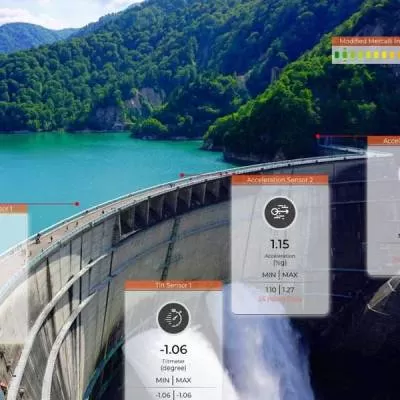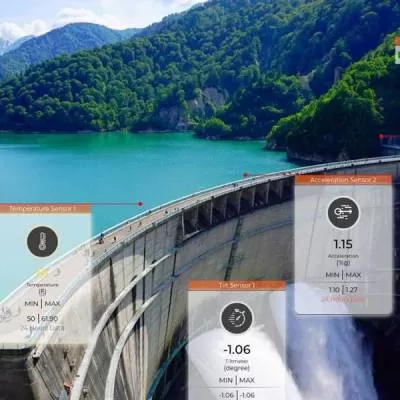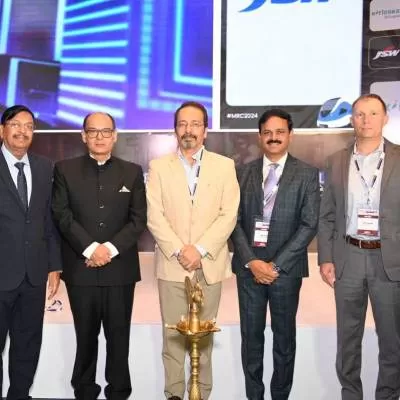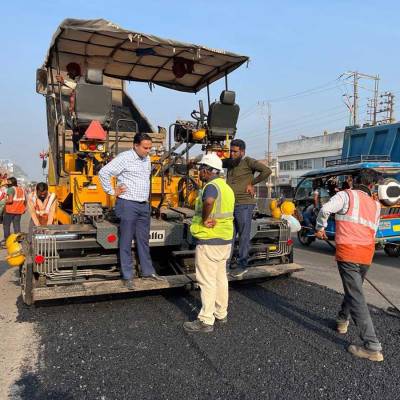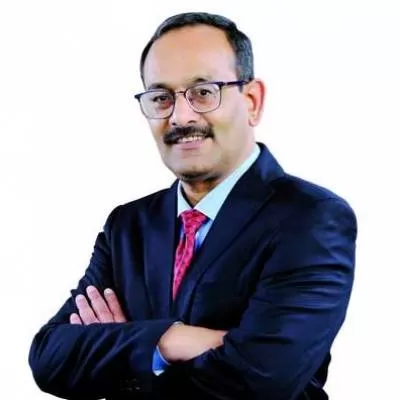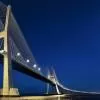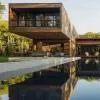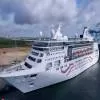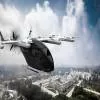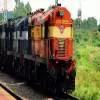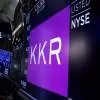- Home
- Technology
- Mumbai on track
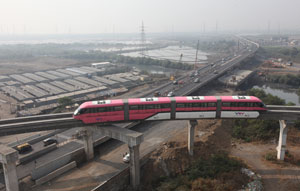
Mumbai on track
February 1, 2014 was D-Day. After a delay of five years, day, India’s first monorail (Phase 1) was inaugurated by Maharashtra Chief Minister Prithviraj Chavan amid much fanfare. There was a rush to click photographs in front of the pink monorail stationed at Wadala monorail station. The airport-like station witnessed many representatives from MMRDA, L&T and Scomi cheering to celebrate the occasion. The chief minister along with other VVIPs travelled in the pink coach from Wadala to Chembur to announce the project ‘Open’ for Mumbaikars the next day onwards. We take you behind the scenes into this iconic project.
Travelling midair
Trains are the lifeline for Mumbai’s commuters. However, owing to the growing population in Mumbai and shortage in the supply of adequate railway systems, they are often overcrowded. “To augment the capacity in public transport in Mumbai, a metro master plan of around 150 km was prepared by MMRDA to be implemented in three phases,” explains Vijaya Lakshmi Additional Chief (Metro, Mono & UMTA) MMRDA.. “However, there are still some areas where neither suburban railway nor metro rail can pass through. Hence, we identified few corridors where alternate modern urban transport could be considered and provide more capacity than buses and could also be a feeder to the suburban and metro system.” This is the framework behind which the country’s first monorail project has been planned.
Mumbai’s mono-mania
The entire monorail project is an elevated one with a length of around 20 km with 17 elevated stations and depot facilities in Wadala. The project runs on Guide way Beams made of concrete. “These are precast beams developed with the GPS system & transfer of co-ordinates ,” says PR Pant, Senior Project Consultant, Louis Berger Group. “Through this system, we can decide upon the size, length and curvature of the beams. For the Mumbai monorail, we have maintained accuracy of plus-minus 3 mm for the beams.”According to Kanesan Velupillai, CEO, Scomi Engineering, “The alignment of a transport solution is critical. Based on the alignment, the civil structures are designed taking in the capabilities of the system to take sharp turns and steep gradients. The guideway beam and switches were built according to the design specifications approved by the client.” Pant adds, “The monorail is the only transport system that can have sharp curves and go through lanes as the required base of the pillars is less and it does not obstruct the roads.”
New genre
For the Mumbai monorail, Scomi has made use of a new-generation product named SUTRA (Scomi Urban Transit Rail Application). “The single rake is about 11.1 m long,” says Velupillai. “The maximum design speed of the monorail is 90 km per hour. SUTRA can handle gradients of up to 6 per cent and has the flexibility to negotiate sharp curves with a 50-m turning radius.” Each SUTRA monorail rake is built in aluminium and designed and formed by Alcan composite structure technology. “The monorail moves on metal rails and uses rubber wheels on a concrete beam. These wheels absorb much of the impact of the movement. Hence, even at high speeds, much of the movement and vibrations of the train is absorbed by the suspension system.” Highly sensitive and pressurised mechanisms ensure that maximum contact is maintained between the wheel and the concrete beam surface.
Vital components
The other vital components of Mumbai’s monorail include switch decks, rolling stock (trains), signalling and communications, automatic fare collection systems, traction supply, an operational control centre and depot facilities for stabling and maintenance. The depot facilities comprise heavy and light maintenance areas, stabling yard, wash plant, operational control centre and security control centre.
The monorail platforms have been designed for six coaches; however, now operations have begun with only four coaches per train. As demand increases, two more coaches will be added. The project will be completed in two phases: Phase 1 is from Wadala to Chembur (8.93 km) while Phase 2 is between Sant Gadge Maharaj Chowk to Wadala (10.24 km). Commercial operations of Phase 1 commenced on February 2, 2014 and the entire project is expected to be complete in the second half of next year.
On site
The site was selected after identifying areas with lack of adequate access to suburban systems or the proposed metro system. There was a need to provide a modern intermediate urban mass transit system such as the monorail in these areas. “The monorail alignment passes through congested areas with more than 50 per cent of the alignment on curves,” says Vijayalakshmi. The benefits of this alignment is that it offers faster connectivity from the island city to the eastern suburbs; reduces travel time by 50 per cent compared to commuting through public buses; provides connectivity with the Western Railway, Metro Line-3 at Mahalaxmi, Central Railway at Chinchpokli and Curry Road, Harbour Line at Wadala and Chembur and the Metro Line 2 at Chembur; aims to offer facilities to 1.8 lakh passengers per day; and offers faster connectivity to the multimodal transport hub in Wadala which will be a future Central Business District ( CBD).
Number zone
The entire project is funded by MMRDA and costs Rs 2,460 crore plus taxes. Vijaya Lakshmi explains, “It means the cost per km works out to be around Rs 140 crore, while other transit systems like metro costs between Rs 200 to Rs 300 crore per km for elevated and around Rs 600 crore per km for underground.”
The hurdles
As this is the first monorail project in the country and only the second in the world, constructing it was a major challenge. Vijaya Lakshmi says, “We faced various challenges including erection of the guideway beams on narrow roads during limited night hours, dealing with various agencies, and construction across Mahul creek and railway tracks. However, all these hurdles were overcome by continuous coordination with other agencies and periodical review.” Pant adds, “In this project there was a lot of learning involved. The main challenge was Pre casting and launching of the curved beams to meet the requirements of the monorail and removal/diversion of underground utilities.”
The results are now apparent for all to see. Mumbaikars have welcomed the monorail with great enthusiasm, a fact that is evident from the long queues at monorail stations. We wish all commuters a happy journey!
Project Details:
• Length: 8.93 km
• Completion: 2013
• Cost: Rs 3,000 approx. crore
• Nodal agency: MMRDA
• Contractor: Larsen & Toubro & Scomi
• Consultants: Louis Berger
The maximum city will boast another feather in its cap, the country’s first monorail, reports AHLAM RAIS.February 1, 2014 was D-Day. After a delay of five years, day, India’s first monorail (Phase 1) was inaugurated by Maharashtra Chief Minister Prithviraj Chavan amid much fanfare. There was a rush to click photographs in front of the pink monorail stationed at Wadala monorail station. The airport-like station witnessed many representatives from MMRDA, L&T and Scomi cheering to celebrate the occasion. The chief minister along with other VVIPs travelled in the pink coach from Wadala to Chembur to announce the project ‘Open’ for Mumbaikars the next day onwards. We take you behind the scenes into this iconic project.Travelling midairTrains are the lifeline for Mumbai’s commuters. However, owing to the growing population in Mumbai and shortage in the supply of adequate railway systems, they are often overcrowded. “To augment the capacity in public transport in Mumbai, a metro master plan of around 150 km was prepared by MMRDA to be implemented in three phases,” explains Vijaya Lakshmi Additional Chief (Metro, Mono & UMTA) MMRDA.. “However, there are still some areas where neither suburban railway nor metro rail can pass through. Hence, we identified few corridors where alternate modern urban transport could be considered and provide more capacity than buses and could also be a feeder to the suburban and metro system.” This is the framework behind which the country’s first monorail project has been planned.Mumbai’s mono-maniaThe entire monorail project is an elevated one with a length of around 20 km with 17 elevated stations and depot facilities in Wadala. The project runs on Guide way Beams made of concrete. “These are precast beams developed with the GPS system & transfer of co-ordinates ,” says PR Pant, Senior Project Consultant, Louis Berger Group. “Through this system, we can decide upon the size, length and curvature of the beams. For the Mumbai monorail, we have maintained accuracy of plus-minus 3 mm for the beams.”According to Kanesan Velupillai, CEO, Scomi Engineering, “The alignment of a transport solution is critical. Based on the alignment, the civil structures are designed taking in the capabilities of the system to take sharp turns and steep gradients. The guideway beam and switches were built according to the design specifications approved by the client.” Pant adds, “The monorail is the only transport system that can have sharp curves and go through lanes as the required base of the pillars is less and it does not obstruct the roads.”New genreFor the Mumbai monorail, Scomi has made use of a new-generation product named SUTRA (Scomi Urban Transit Rail Application). “The single rake is about 11.1 m long,” says Velupillai. “The maximum design speed of the monorail is 90 km per hour. SUTRA can handle gradients of up to 6 per cent and has the flexibility to negotiate sharp curves with a 50-m turning radius.” Each SUTRA monorail rake is built in aluminium and designed and formed by Alcan composite structure technology. “The monorail moves on metal rails and uses rubber wheels on a concrete beam. These wheels absorb much of the impact of the movement. Hence, even at high speeds, much of the movement and vibrations of the train is absorbed by the suspension system.” Highly sensitive and pressurised mechanisms ensure that maximum contact is maintained between the wheel and the concrete beam surface.Vital componentsThe other vital components of Mumbai’s monorail include switch decks, rolling stock (trains), signalling and communications, automatic fare collection systems, traction supply, an operational control centre and depot facilities for stabling and maintenance. The depot facilities comprise heavy and light maintenance areas, stabling yard, wash plant, operational control centre and security control centre.The monorail platforms have been designed for six coaches; however, now operations have begun with only four coaches per train. As demand increases, two more coaches will be added. The project will be completed in two phases: Phase 1 is from Wadala to Chembur (8.93 km) while Phase 2 is between Sant Gadge Maharaj Chowk to Wadala (10.24 km). Commercial operations of Phase 1 commenced on February 2, 2014 and the entire project is expected to be complete in the second half of next year. On siteThe site was selected after identifying areas with lack of adequate access to suburban systems or the proposed metro system. There was a need to provide a modern intermediate urban mass transit system such as the monorail in these areas. “The monorail alignment passes through congested areas with more than 50 per cent of the alignment on curves,” says Vijayalakshmi. The benefits of this alignment is that it offers faster connectivity from the island city to the eastern suburbs; reduces travel time by 50 per cent compared to commuting through public buses; provides connectivity with the Western Railway, Metro Line-3 at Mahalaxmi, Central Railway at Chinchpokli and Curry Road, Harbour Line at Wadala and Chembur and the Metro Line 2 at Chembur; aims to offer facilities to 1.8 lakh passengers per day; and offers faster connectivity to the multimodal transport hub in Wadala which will be a future Central Business District ( CBD).Number zoneThe entire project is funded by MMRDA and costs Rs 2,460 crore plus taxes. Vijaya Lakshmi explains, “It means the cost per km works out to be around Rs 140 crore, while other transit systems like metro costs between Rs 200 to Rs 300 crore per km for elevated and around Rs 600 crore per km for underground.”The hurdlesAs this is the first monorail project in the country and only the second in the world, constructing it was a major challenge. Vijaya Lakshmi says, “We faced various challenges including erection of the guideway beams on narrow roads during limited night hours, dealing with various agencies, and construction across Mahul creek and railway tracks. However, all these hurdles were overcome by continuous coordination with other agencies and periodical review.” Pant adds, “In this project there was a lot of learning involved. The main challenge was Pre casting and launching of the curved beams to meet the requirements of the monorail and removal/diversion of underground utilities.”The results are now apparent for all to see. Mumbaikars have welcomed the monorail with great enthusiasm, a fact that is evident from the long queues at monorail stations. We wish all commuters a happy journey!Project Details: • Length: 8.93 km• Completion: 2013• Cost: Rs 3,000 approx. crore • Nodal agency: MMRDA • Contractor: Larsen & Toubro & Scomi• Consultants: Louis Berger





